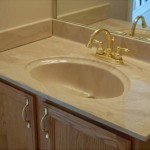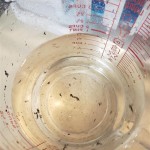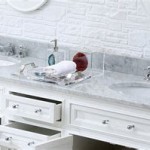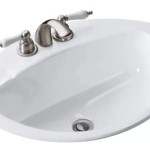What Happens If You Drink Bathroom Tap Water?
Most developed countries adhere to strict water quality regulations, ensuring tap water is potable, regardless of the tap's location within a building. This means water from bathroom sinks is generally safe for consumption. However, several factors can influence the safety and palatability of bathroom tap water, leading to potential health risks or undesirable taste and odor.
One critical factor is the age and condition of the plumbing system. Older homes, particularly those with lead pipes, pose a significant risk. Lead can leach into the water, especially if the water has been sitting stagnant in the pipes for an extended period. Lead contamination can cause serious health problems, particularly in children and pregnant women. Galvanized pipes, while not as dangerous as lead, can also corrode over time, leading to rusty-colored water and metallic taste.
Another potential issue is biofilm buildup within the pipes. Biofilm is a slimy layer of bacteria that can accumulate in plumbing systems, particularly in areas with lower water flow. While most biofilm bacteria are harmless, some species can pose health risks, especially to individuals with compromised immune systems. The presence of biofilm can also affect the taste and odor of the water.
Faucet aerators can also harbor bacteria and other microorganisms. These small mesh screens are designed to reduce water flow and splashing, but they can become breeding grounds for bacteria if not cleaned regularly. While the risk of illness from these bacteria is generally low, it's a factor to consider, particularly in healthcare settings.
The presence of bathroom-specific contaminants is another concern. Cleaning products, toiletries, and cosmetics can inadvertently contaminate the water supply if they come into contact with the faucet or sink. While these contaminants are usually present in trace amounts, they can affect the taste and smell of the water and potentially pose health risks with repeated exposure.
Stagnant water is another factor impacting water quality. Water sitting in pipes for extended periods, such as overnight or during vacations, can become stale and develop an unpleasant taste or odor. It can also increase the likelihood of lead leaching from older pipes and the growth of bacteria.
Water temperature also plays a role. Hot water is more likely to dissolve metals from pipes, including lead and copper. While cold water is generally safer, it can still be affected by other contaminants mentioned earlier.
The overall quality of the municipal water supply also influences the safety of bathroom tap water. While water treatment plants effectively remove most contaminants, occasional issues like boil water advisories indicate potential risks that affect all tap water, including bathroom faucets.
In regions with hard water, mineral buildup can occur within the pipes and faucet, leading to reduced water flow and a chalky taste. While hard water is generally not harmful to health, it can affect the palatability of the water.
Regular maintenance and cleaning are essential to ensuring the safety and quality of bathroom tap water. Flushing the pipes by running the cold water for a few minutes, especially after periods of stagnation, can help remove stale water and reduce the risk of lead exposure. Regularly cleaning faucet aerators can prevent bacterial buildup. It's also advisable to avoid storing cleaning products or toiletries near the sink to prevent accidental contamination.
If concerns about the quality of bathroom tap water persist, several options are available. Water filters, such as faucet-mounted filters or pitcher filters, can remove many common contaminants, including lead, chlorine, and sediment. Boiling water for one minute effectively kills most harmful bacteria and viruses. Bottled water can also be used as an alternative, though it's important to consider the environmental impact of plastic waste.
Testing the water is the most reliable way to determine its quality. Home water testing kits can detect common contaminants, while professional laboratory testing provides a more comprehensive analysis. If tests reveal concerning levels of contaminants, consulting a plumber or water treatment specialist is recommended to address the issue.
Ultimately, the safety of drinking bathroom tap water depends on a combination of factors, including the age and condition of the plumbing, the presence of contaminants, and the quality of the municipal water supply. By understanding these factors and taking appropriate precautions, individuals can make informed decisions about consuming bathroom tap water.
People Are Only Just Discovering Why You Shouldn T Drink Water From The Bathroom Tap
How To Tell If Water Is Safe Drink Or Contaminated

People Discover Real Reason Your Mother Always Warned You Not To Drink From Bathroom Tap And It S Revolting Irish Mirror

Drink Water From A Public Toilet Singapore S Taps Put To The Test Cna

Is It Safe To Drink Water From Your Bathroom Tap

Experts Explain Why Drinking Water From Your Bathroom Tap Could Pose A Health Risk Chronicle Live
How To Tell If Water Is Safe Drink Or Contaminated

Why You Shouldn T Drink Water From The Bathroom Tap If Live In This Type Of House Coventrylive

Why You Should Never Drink Water From The Bathroom Tap Daily Mail

Is Bathroom Tap Water Safe To Drink Experts Explain Why You Shouldn T Hngn Headlines Global News







